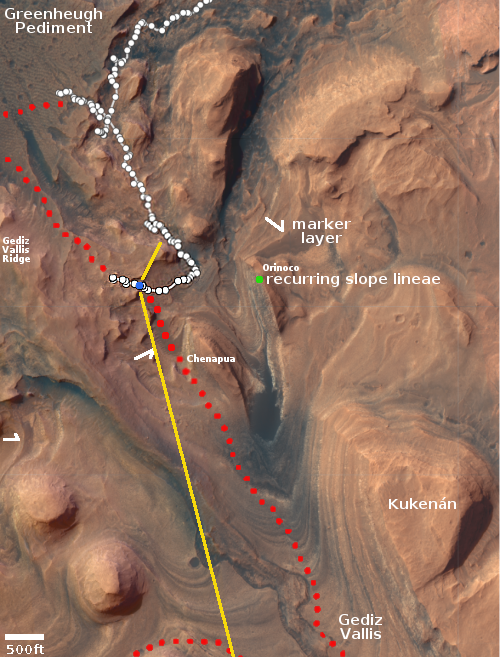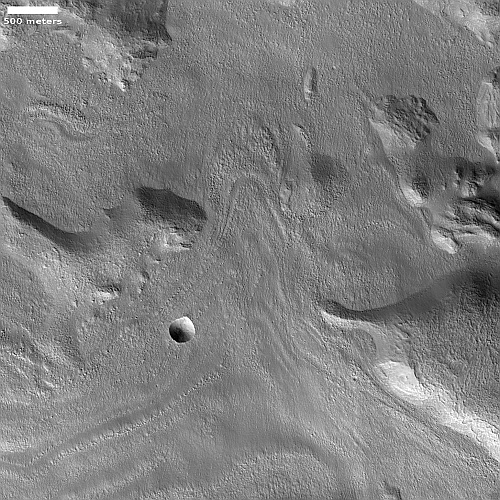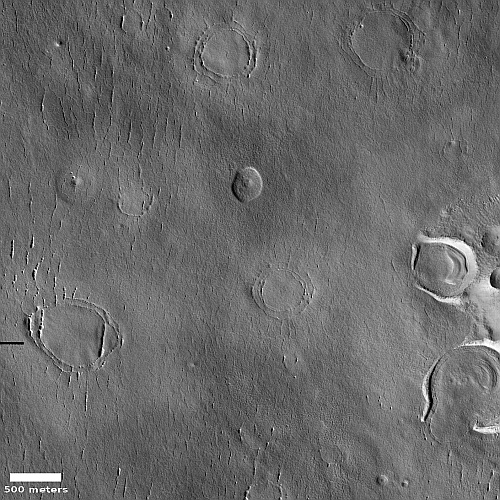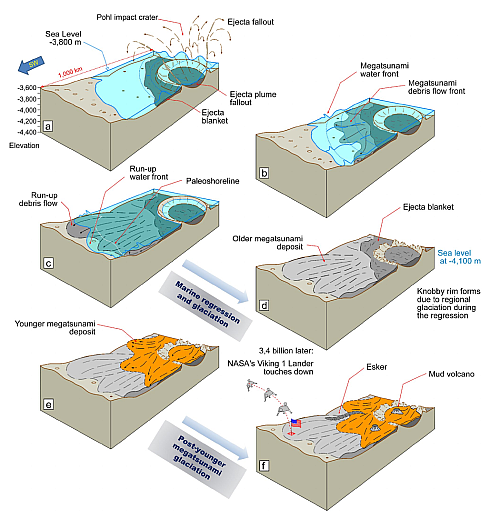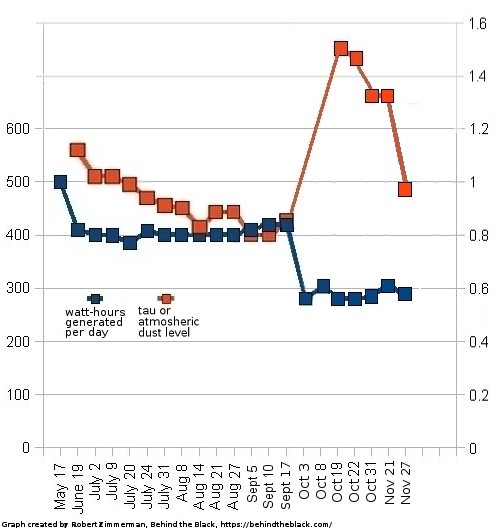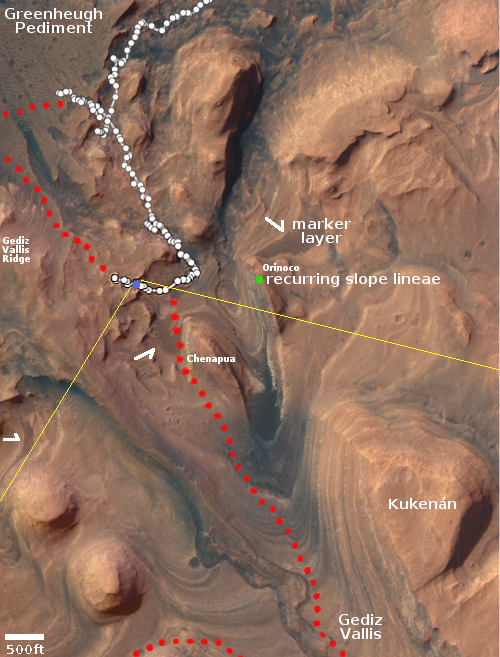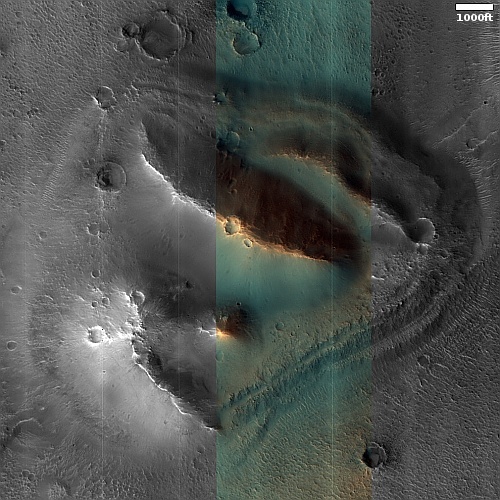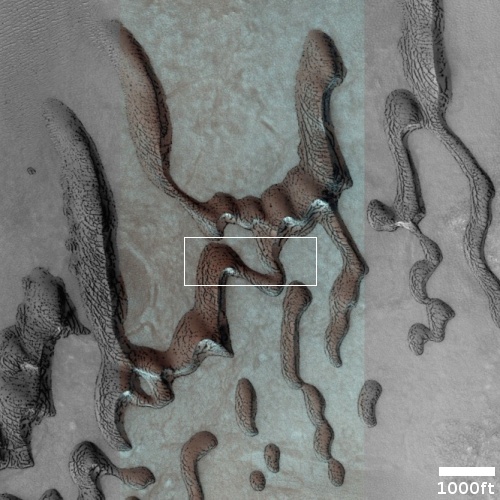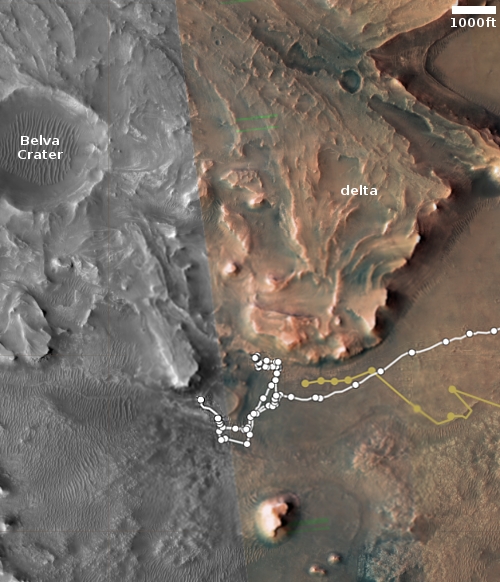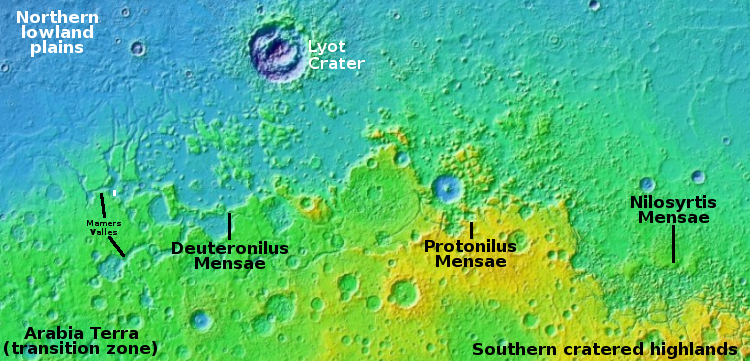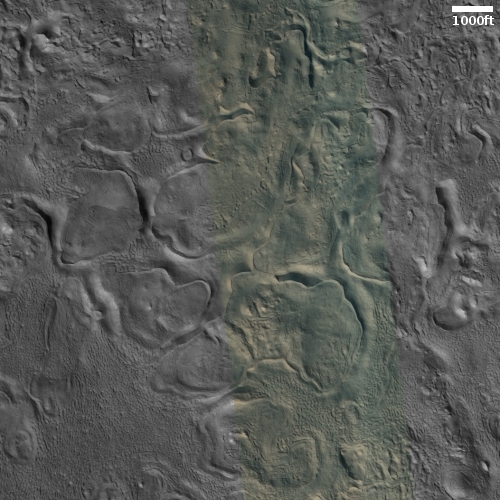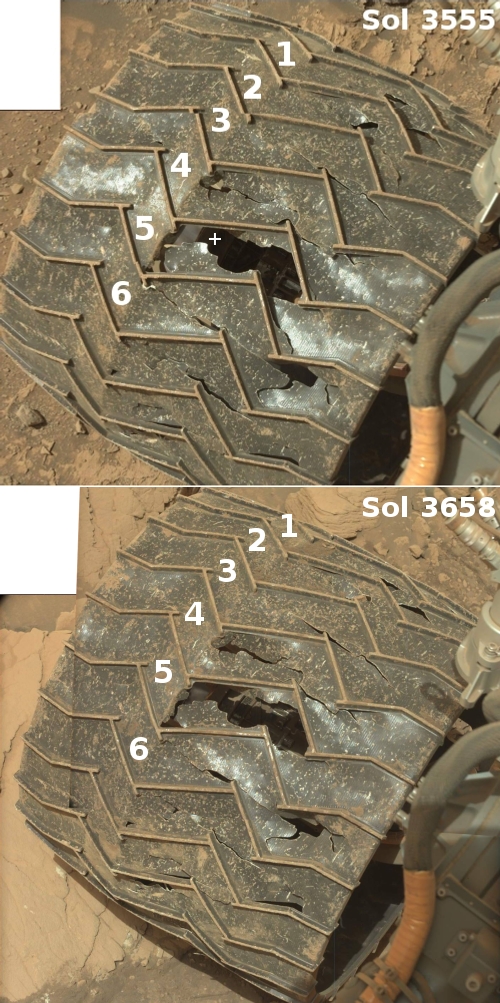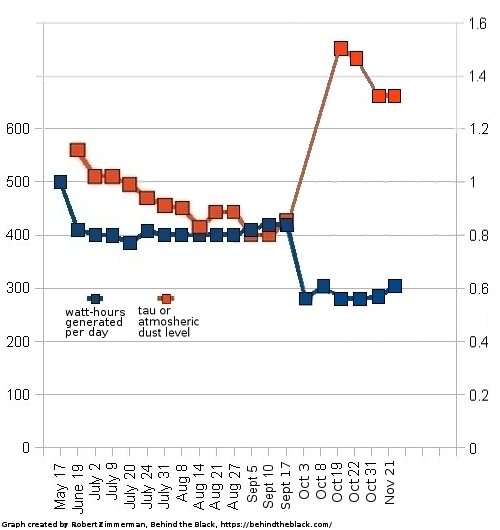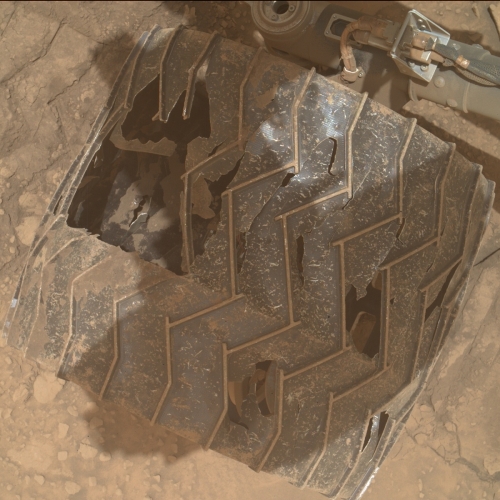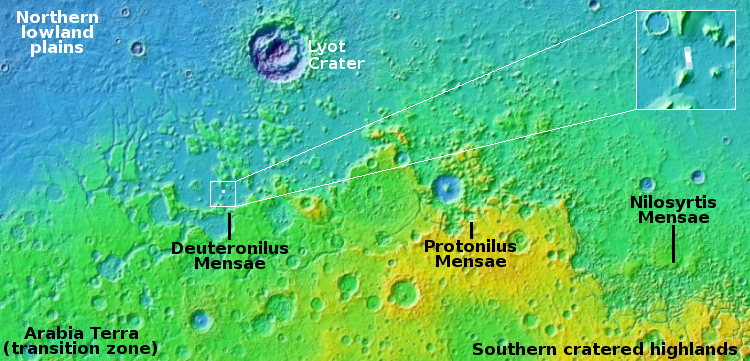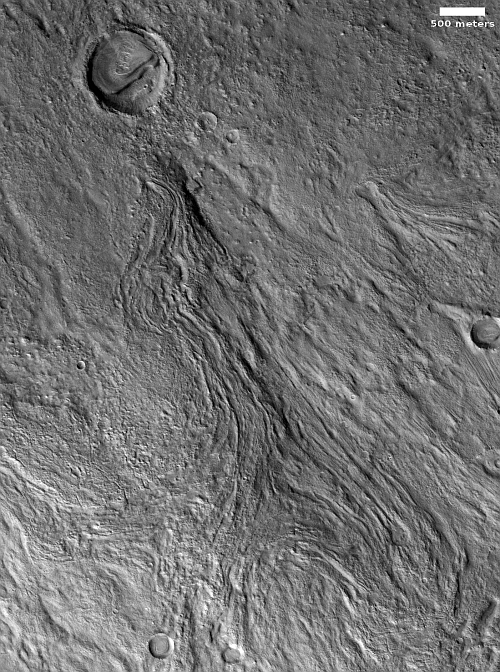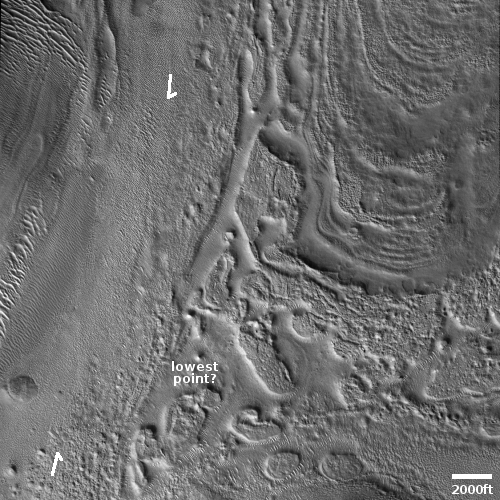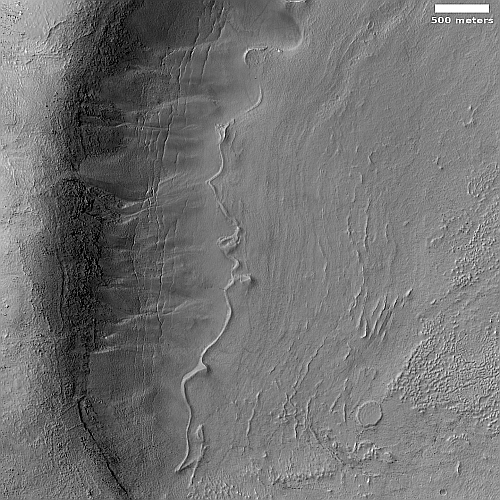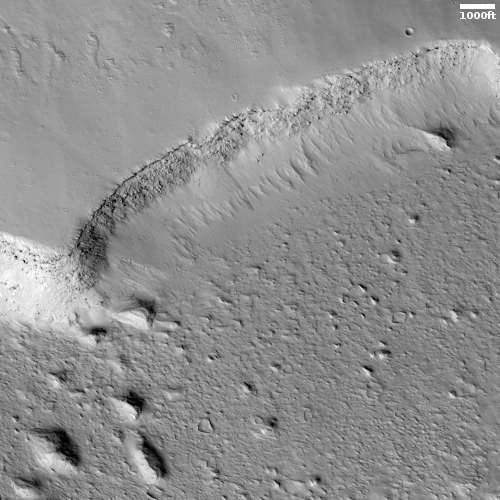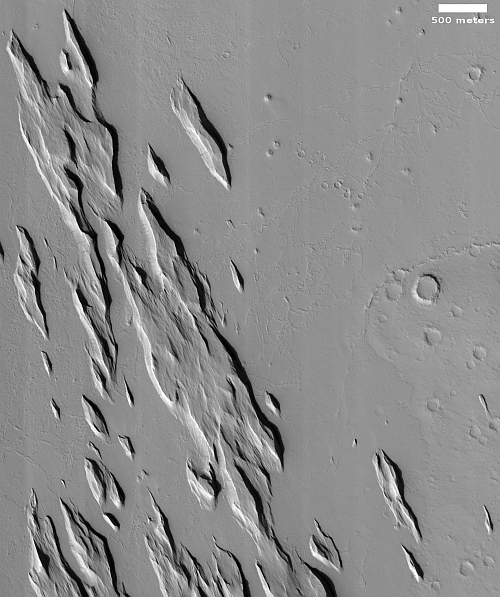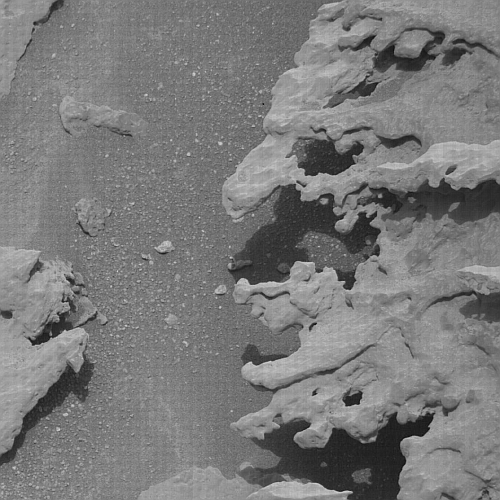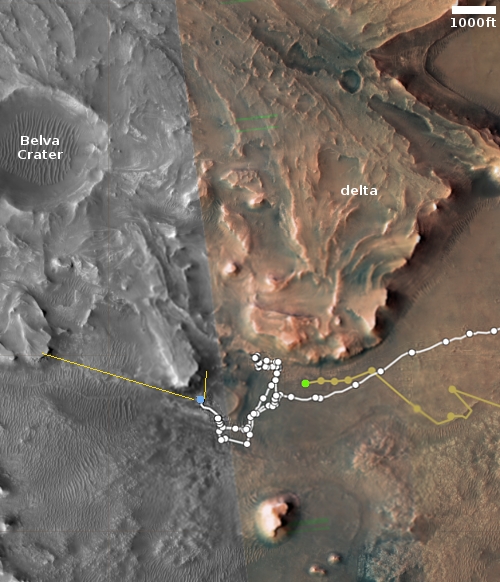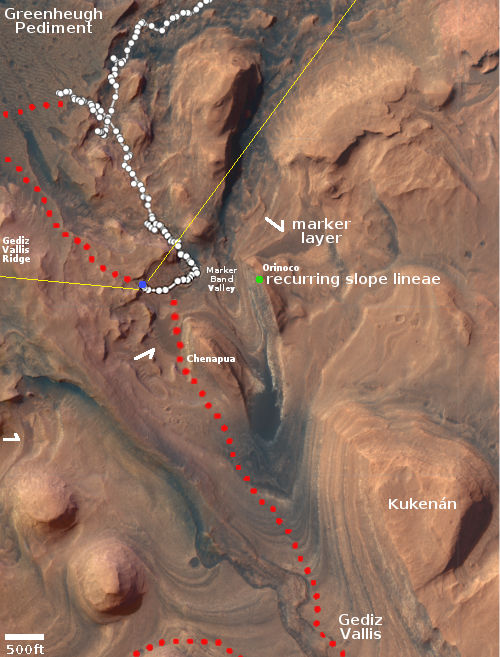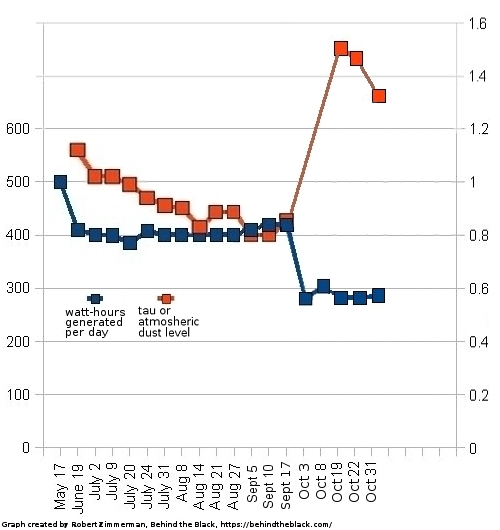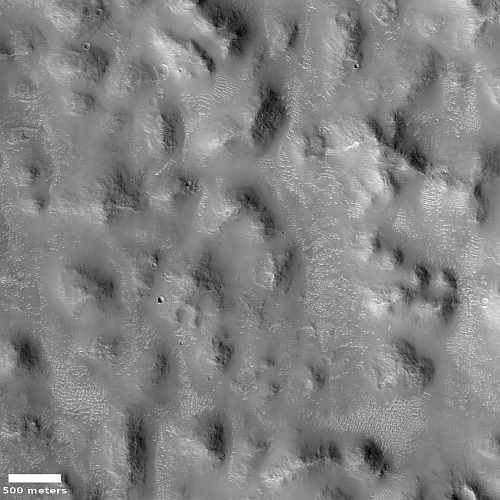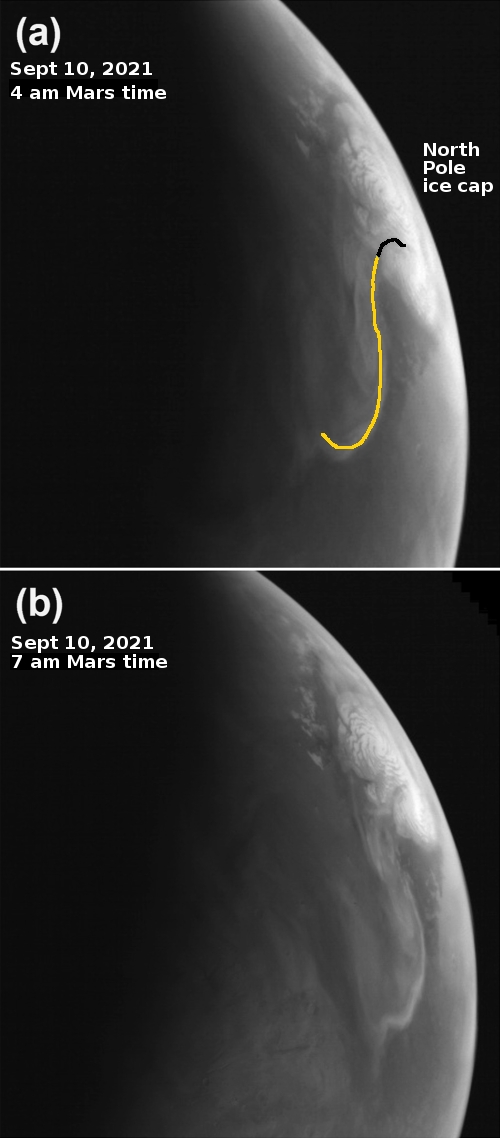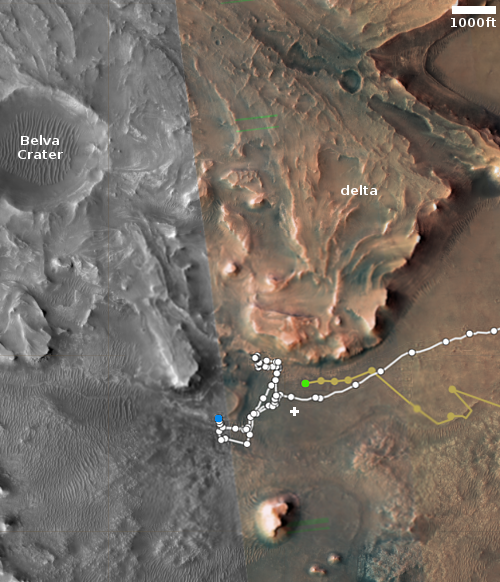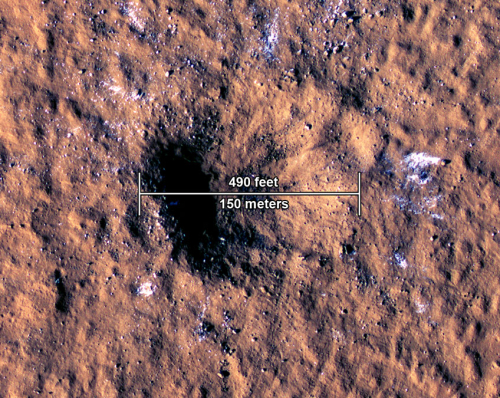Curiosity’s recent and future travels amid the Martian mountains
The panorama above, created from 31 images taken by Curiosity’s right navigation camera on December 5, 2022, provides us a wonderful overview of the rover’s recent and future travels amid the lower foothills of Mount Sharp in Gale Crater.
The overview map to the right provides context. The blue dot indicates Curiosity’s present position. The yellow lines indicate the approximate area viewed by the panorama. The red dotted line indicates Curiosity’s planned route, with the white dots the route it has actually traveled. On the panorama, the pink dotted line indicates where it has been, and the red dotted line where it is going.
For scale, Kukenan is estimated to be about 1,500 feet high. Though Chenapua in front seems comparable, it is actually much smaller, only about 200 to 300 feet high, at the most. Orinoco, though lower on the mountain, is probably about 300 to 400 feet high.
To really see the magnificence of this terrain, you must click on the panorama and explore the full image. Curiosity is truly traveling amid mountains, and is the first human robot to do so on another world.
The panorama above, created from 31 images taken by Curiosity’s right navigation camera on December 5, 2022, provides us a wonderful overview of the rover’s recent and future travels amid the lower foothills of Mount Sharp in Gale Crater.
The overview map to the right provides context. The blue dot indicates Curiosity’s present position. The yellow lines indicate the approximate area viewed by the panorama. The red dotted line indicates Curiosity’s planned route, with the white dots the route it has actually traveled. On the panorama, the pink dotted line indicates where it has been, and the red dotted line where it is going.
For scale, Kukenan is estimated to be about 1,500 feet high. Though Chenapua in front seems comparable, it is actually much smaller, only about 200 to 300 feet high, at the most. Orinoco, though lower on the mountain, is probably about 300 to 400 feet high.
To really see the magnificence of this terrain, you must click on the panorama and explore the full image. Curiosity is truly traveling amid mountains, and is the first human robot to do so on another world.


